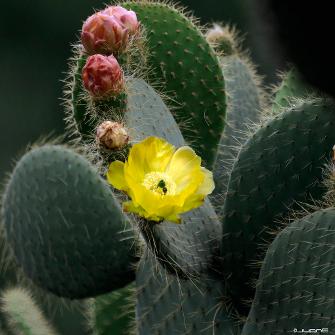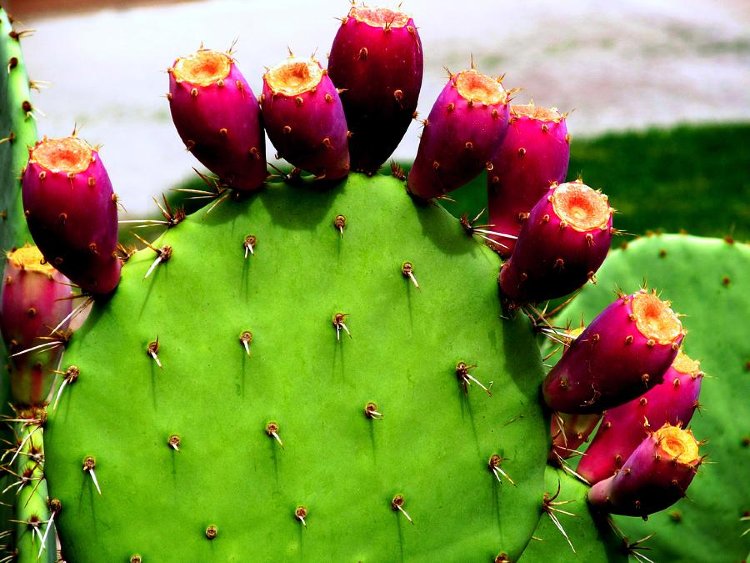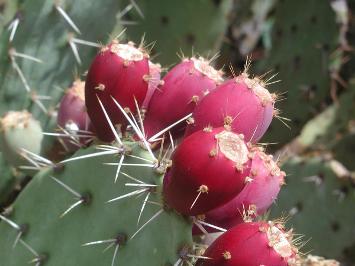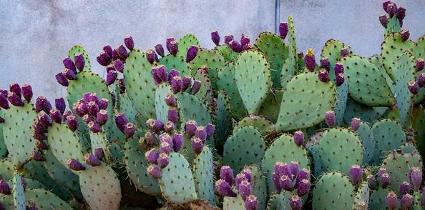
Prickly pears (called tunas by the locals) are to be found in abundance on the island; they were highly prized in past times and increased the value of land as any other fruits were very scarce and the plants pads were hosts for the cochineal beetle, once an important dye source. The fruits are covered in tiny prickles (glochids) that penetrate the skin at the slightest touch and are difficult to remove so they need some care in handling but are a delicious treat if you take the trouble to prepare them.
Locals use long handled wooden tongs to harvest them but thick gloves
can be utilized.

The fruits are ripe when a slight twist will bring them
easily away from the “pads”. The perfect stage of ripeness only lasts
about a week and the maximum storage time is 8-9 days. Once the fruit is
removed from the cactus it will rapidly lose its nutritional value and
may ferment, so it’s best to eat or process it soon after its harvest.
The
fruits from the plants that yield a light, honey coloured flesh tuna
are the best, their taste is reflected in the honey colour, the ones
with a deeper red fruit are not so sweet.


Once picked, soak the
fruits in water to soften their prickles, or pass through an open flame,
then peel. They are delicious chilled and eaten raw, exquisite when
passed through a juicer or can be made into syrup (the syrup can be
reduced further and fermented into an alcoholic drink – known as
coloncha in Mexico) or made into jam.
There has been medical
interest in the plant; some studies have shown that the pectin
contained in the Prickly Pear pulp lowers levels of "bad" cholesterol
while leaving "good" cholesterol levels unchanged. Another study found
that the fibrous pectin in the fruit may lower diabetics' need for
insulin. There are on going studies and at this point there are no
proven results on humans.